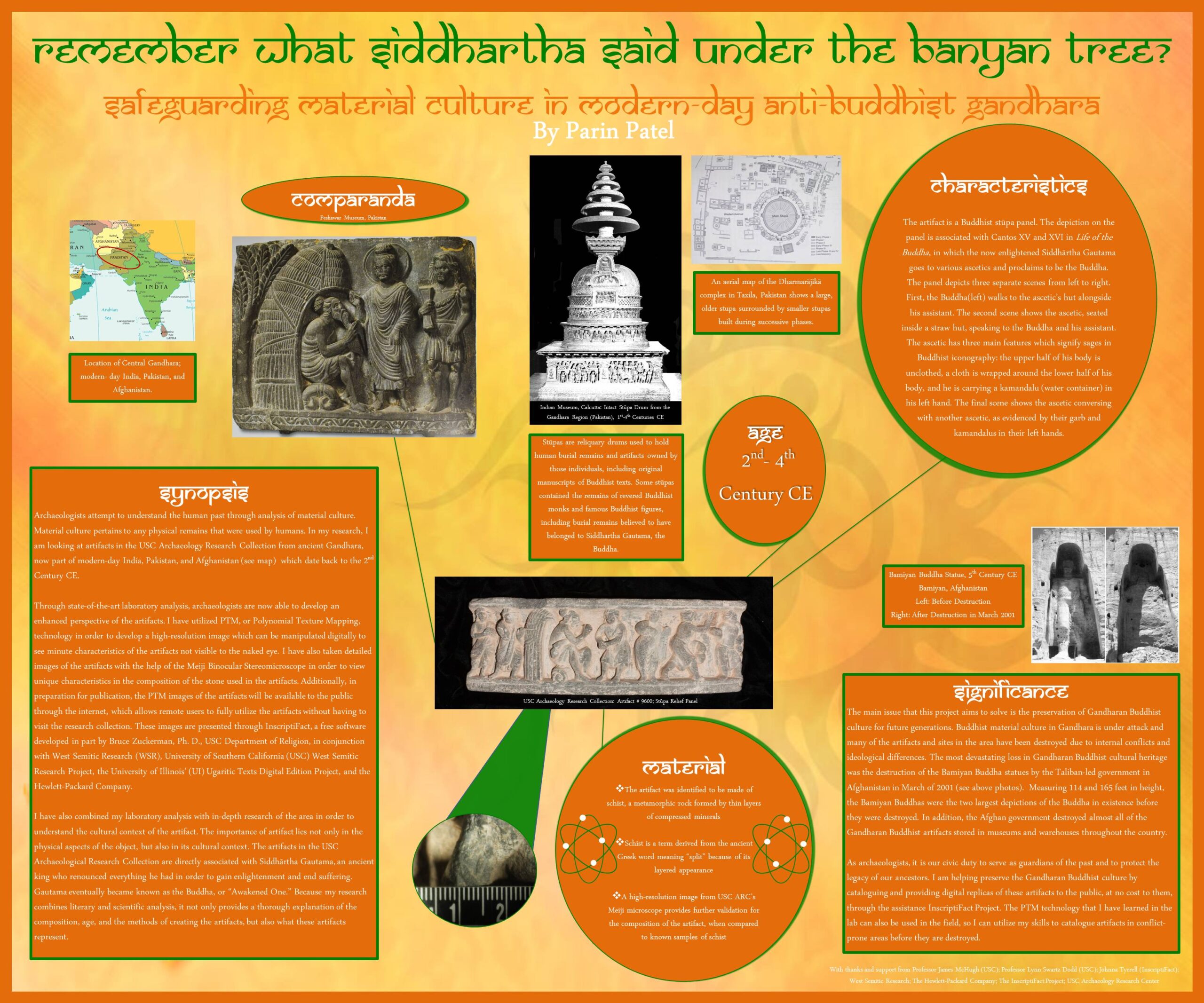Project Title:
Remember What Siddhartha Said Under the Banyan Tree?: Safeguarding material Culture in Modern-Day Anti-Buddhist Gandhara
Author:
Parin Patel, USC Archaeology Undergraduate Student
Faculty Sponsor:
James McHugh
Project Summary:
This project aims to understand the meaning associated with a series of Buddhist artifacts found in the Gandharan region of Afghanistan. In addition, the goal of the project is to preserve the Gandharan Buddhist culture, a region suffering from anti-Buddhist backlash, through the use of Polynomial Texture Mapping (PTM) technology.
Main Issue:
I will address the issues associated with analyzing, preserving, and recreating material culture. Archaeologists are given the tasks of studying human cultures and preserving their legacies. This project aims to provide a clear understanding of the Gandharan region through the analysis of artifacts and texts from the area, as well as preserve their cultural legacy through an online artifact database that will be available long after the fragile physical remains of the culture have deteriorated.
Learning Outcomes:
I have learned to utilize the literary medium in order to better analyze and understand material culture. I have also discovered how to undertake in-depth academic research in the field of archaeology.
Student Contribution:
I have personally taken and processed the Polynomial Texture Mapping (PTM) images for the project. With the assistance of Professor McHugh, I have deciphered the meaning behind many of the Gandharan artifacts in the collection. I am also working with the Fine Arts Department in order to recreate an ancient stupa by piecing together stupa fragments from the collection.
Abstract:
The main question an archaeologist asks is, “Why?” Archaeology is simply the effort to understand the human past through the analysis of material culture. Material culture pertains to any physical remains that were used by humans and can range from pottery and lithic artifacts to literary texts and human remains.
The aim of archaeology is to analyze material culture in order to understand and preserve the legacy of past cultures. The area of Gandhara, located in modern-day India, Afghanistan, and Pakistan, is in urgent need of protection and preservation. Due to the anti-Buddhist regime in the region, Buddhist material culture has been under attack for the past few decades. The Afghani government, in particular, destroyed many Buddhist artifacts in museums throughout the country. The most notable desecration of Buddhist material culture was the destruction of the Bamiyan Buddha statues in 2001. These statues, measuring 114 and 165 feet in height, were the largest known depictions of the Buddha in the world.
Over the course of the past three years, I have dedicated my research efforts to analyze and understand the Gandharan civilization. The aims of this project are to analyze the Gandharan Artifact Collection, a group of about 60 individual artifacts in the USC Archaeological Research Center, in order to decipher the meaning behind these artifacts and to utilize Polynomial Texture Mapping (PTM) technology to preserve and distribute digital recreations of the objects in the collection through the Inscriptifact Artifact Database. The digital PTMs will last long after the physical artifacts are gone and will also provide an “online museum” to anyone interested in Gandharan culture, free-of-charge. In addition, I will recreate a Buddhist stupa, a reliquary structure used to house important Buddhist artifacts and burial remains, by deciphering and incorporating actual stupa fragments into the replica.
Project Pictures: Click Here

PDF of the Poster
Contact Us
Director of the Undergraduate Archaeology Program
Prof. Lynn Dodd
825 Bloom Walk, ACB 335
Los Angeles, CA 90089-1481